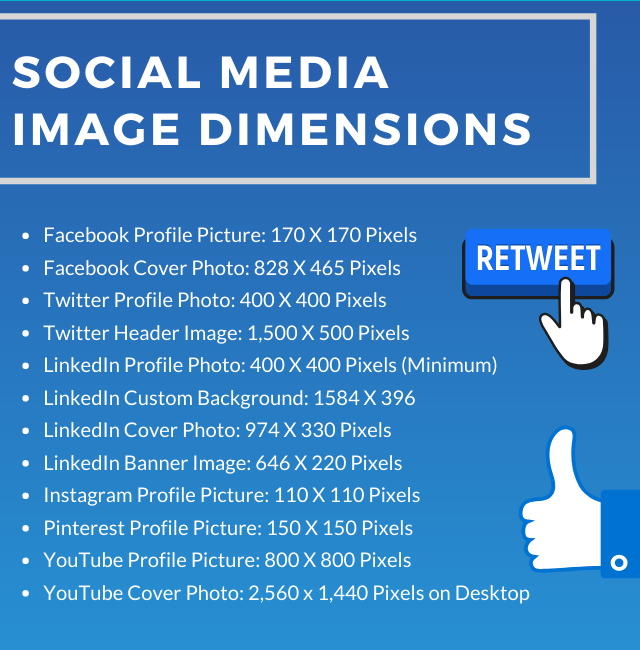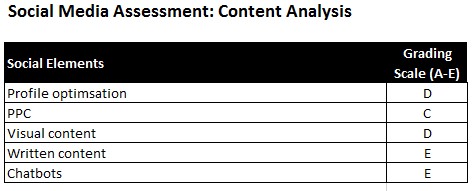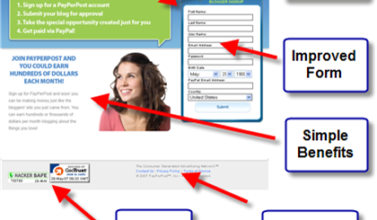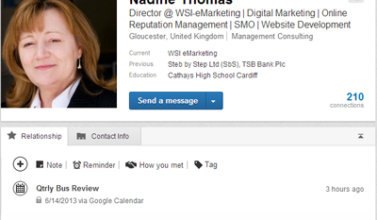
With consumers spending so much time on social media, brands need to have a solid online presence. They also need to portray the right message to the right people at the right time and on the most relevant channels. You need to make sure you are getting the most from your online efforts and a social media assessment can help.
During challenging times in the face of COVID-19, it’s a stark reminder of why social media is such a powerful business tool. Imagine dealing with this pandemic without social media and digital marketing in general. How would businesses otherwise connect with their customers effectively? A social media assessment certainly opens the door to implementing cost-effective and organic strategies.
Is A Social Media Assessment The Same As An Audit?
Contrary to what some may think, a social media assessment is different than a social media audit. Remember, an audit comes from an inspection with a ‘pass’ or ‘fail’ result depending on whether or not you meet certain criteria.
An audit has documented findings requiring actions but in a social media assessment, you are only evaluating everything. The goal is to assess whether your current social media marketing strategy is working. If you find that it isn’t, the social media assessment allows you to make positive changes.
In social media, you can easily go around in circles wasting valuable time and resources in the hopes that your efforts over the last few months, or years, are paying dividends. A social media assessment involves looking at your online presence and evaluating the overall strategy.
Recommended: ‘Tips For A Successful Social Media Strategy’
How Do I Conduct A Social Media Assessment?
Marketers know that there is always room for improvement in several areas of business, especially social media and creative strategies. Standing out from the competition in a social media dominated world is not easy but it all starts with taking a step back, looking at everything from a fresh perspective and do a clean-up if necessary. In this article, we briefly explain how to do a social media assessment.
1. Record Relevant Data
Information is critical in all aspects of business and social media is no different. Start your social media assessment by creating a spreadsheet template with several columns. In one column, paste the URL of each social media platform for ease of access, i.e. Facebook, Twitter, LinkedIn, Instagram, Snapchat or Pinterest.
The other columns can contain any information you believe to be important. Considering that not all companies have the same measurement criteria, this can include things like followers, engagement, demographics and other essential KPIs and metrics.
A handy tip is to create one “Summary” tab in your template with a tab for each social media channel. It is better this way than having them all on one as every channel has different metrics. For example, Twitter has retweets while Facebook and Pinterest don’t so there’s no point in adding those columns.
Recommended: ’10 Top Social Media Analytics Tools’
2. Check That All Information Is Correct
Nothing spells ‘unprofessionalism’ more than making basic errors whether in the account setup or content. There are some basics that you always have to evaluate during every social media assessment which includes:
- Profile picture
- Bio information
- Social media handles
- Account / Website URL
- Headers and footers
- Photo galleries
It’s important to make time and check that all of these basic elements are correct. This means rectifying spelling errors, missing details, inaccurate information or replacing bad quality imagery. Every platform has different social media image dimensions as shown below.

3. Assess Your Social Media Content
Assessing your content is a core element in your social media assessment. This involves studying and analysing your content to determine the best way to reshape your content strategy for improved results.
Similarly to the previous section, make a spreadsheet and add the last 20-50 content pieces you shared online. On this sheet, track the impressions, clicks, comments and shares for each piece of content. If you have sufficient data, you should be able to identify which posts performed well and which didn’t.
For example, you may notice that a blog article of 800 words didn’t yield the same results as a short-form video on Facebook when compared to LinkedIn. If that is the case, more effort should go into creating short videos on Facebook and longer articles for LinkedIn.
Recommended: ‘Increase Traffic And Conversions With Quality Content Marketing’
4. Look At Your Competitors
Just as you look at the competition’s SEO efforts and content ideas, you should also conduct the same content analysis for two or three of your biggest competitors. Evaluate their previous 20-50 content pieces and see what has worked well for them. Of course, you should never copy the competition but you can use the same concepts and create better content for your followers.
Understanding how you match up to your competitors will provide valuable insights into what you may need to change or improve. Use whatever information you collect from their marketing strategies to help guide you on your path. Here’s a detailed look at ‘How To Conduct A Competitor Analysis‘. It includes aspects such as a website audit, keywords, local presence and remarketing among others.
5. Complete A Grading Scale
Now that you have gathered some important data on your social profiles and the competition, it’s time for a grading scale. This means going through and grading every element of your social strategy using a grading system.
There’s no right or wrong way of doing this but a good example is a scale from 1 – 10 or A to E (1/A = bad; 10/E = excellent). It doesn’t matter which grading system you use as long as you analyse the following:
- Page/profile optimisation
- Visual content (blog banners, social media images, infographics, etc)
- Written copy (blogs, e-book, whitepapers)
- Comments and engagement across all social channels
- Responsiveness to comments and messages
- Branding consistency
- Use of instant messenger or Chatbots
- The overall growth of followers
- Paid search advertising efforts
- Frequency of posts
- The type of content mix
- Live video or social media videos

Who Needs A Social Media Assessment?
A social media assessment forms an important part of a business strategy and should not be a matter of hope or wishful thinking. In many cases, an assessment is a necessary step especially in the following situations:
- Your brand has been doing social media for some time and you haven’t yet performed any type of assessment
- When you want more traffic and engagement rates but you have not evaluated your social media efforts
- When you want to take your social media to the next level but don’t want to use outdated or unproductive efforts that won’t help your business grow and succeed
Final Thoughts
Without doing a social media assessment, you won’t be able to set any benchmarks as you have no data to back-up your claims. This means you can’t develop an effective strategy and you are left basing everything on a hunch or ‘guesstimate’.
Compiling a content analysis and social media assessment spreadsheet will give you a basic overview of your channels. Also, you can update it as you see fit and track your performance with each new assessment. Keeping an accurate record of historical data is the only way to measure performance and plan accordingly in terms of what is working and what is not.
If you need expert advice on all things digital marketing, WSI can help as we specialise in social media marketing, SEO, web development and marketing automation among others. Visit our website or call us on 01453 542761 to discuss all of your requirements.
Related Post
What’s the single...
Adam Vincenzini from Comms Corner recently posted a very good article which I think goes...
- January 25, 2011
- By Rob Thomas
- Blogging
Effective Facebook Marketing...
With over 600 million users, Facebook represents the single most connected platform on...
- March 1, 2011
- By Nadine Thomas
- Latest Online Trends
How To Drive Sales With...
Landing pages have long been the primary tool of the web-savvy marketer. Whether the...
- June 12, 2011
- By Nadine Thomas
- e-Commerce
Content Sharing Via Social...
Target marketing to meet your business goals Is your business using social media channels...
- June 15, 2011
- By Nadine Thomas
- Digital Marketing
Social Media Spotlight:...
Until Facebook came along, Google was the undisputed online leader. However, this started...
- August 23, 2011
- By Nadine Thomas
- Social Media
10 Best Ways to take...
Others may have seen a pop-up ‘invitation to upgrade’ message when they accessed...
- June 1, 2013
- By Rob Thomas
- Digital Marketing











Leave a Comments